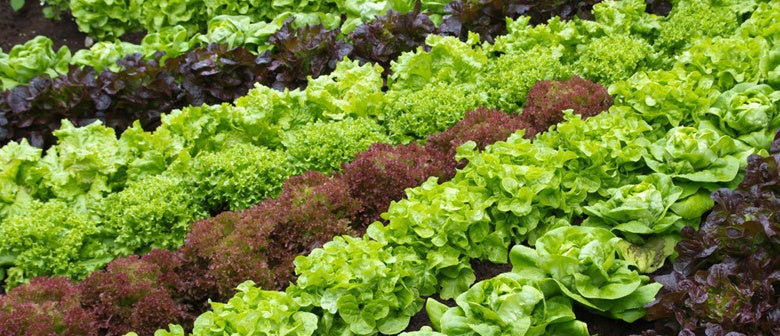By Nicola Kawana
Lately I’ve been noticing little signs up in the supermarket vege section and at my local green grocer, telling us about a shortage of leafy greens. This is due to our current weather events and the fact that global warming is a true thing which is affecting, among many things, our food supply. Due to the recent deluge of rain, our national food growers have lost a whole lot of veg, unable to cope with what is the saturation point in commercial growing soils. How we can prepare and prevent that in the future are conversations our horticultural industries no doubt are having. But a more immediate solution is to be found in our own backyards. Leafy greens are the most fuss free, easy peasy edibles to grow. Even the most novice of gardeners can grow greens to be proud of. I’m talking kale, swiss chard, rocket and mizuna. New Zealand spinach, lettuces and cress all perform with little attention in the home garden. And unlike a commercial venture, at home we can manage these green super dudes in all weather situations.
A little scientific paraphrasing…
Here’s a little thing about chlorophyll. We know it’s the greenness of our foliage. But did you know that when we break it down, it’s basically the sun reincarnated in plant form. Chlorophyll will ingest the suns rays where, with the help of magnesium, transmute these lovely rays through the process of photosynthesis, flushing a leaf with that diverse spectrum of green. The importance of leafy greens in our diet is now well documented. They supply us with essential vitamins, minerals and fiber and are incredibly versatile. Leafy greens and herbs are staples in my vege patch and they grow all year round. I eat them everyday in some form because I am a born vege lover. You can also whizz them up into a green smoothie for an extra kick. In fact, I’d go so far as to say, if you only grow one veg, make it a leafy green. Even if you don’t have a vege patch. You can tuck them into an ornamental garden, or grow them in a planter on your back door or deck.
So here are my top 3…
Swiss Chard or Silverbeet
These both have the reputation of being unglamorous and common. I think in part this is due to generations of us being force feed soggy clumps of it on a regular basis. This can be remedied by adding a splash of olive oil and a knob of butter to a hot frying pan. Add crushed garlic then finely chopped chard, cook until it’s wilted then season with salt and pepper. Dress with more olive oil and Parmesan if you fancy. Swiss chard is a common vegetable in our gardens because it grows so well in our climate. But it is also highly perishable which is another great reason to have it on hand and alive in the garden.
Kale
Have we reached peak kale yet? This has been given a superstar veg status in recent years and is acclaimed as one of the most nutrient dense foods on the planet. It has become highly covetable as an expensive powder and as gourmet chips. In reality this stuff is cheap to grow and converting it into chips is easy-as. Simply remove the leaf from the stalk, rip it into bite sized bits, toss it in a little olive oil and salt and bake it on an oven tray for 10 minutes or so. Kale is an excellent option if you like a bit of a bitter tang in your leaf as I do!
Spinach
New Zealand spinach is a much underrated green super hero. Plant it once and you will have if for life, as it self seeds prolifically. It’s fleshy, almost succulent like leaf can be used raw as a youngin’ or as you would regular spinach. But unlike regular spinach, it won’t bolt as soon as your back is turned. It gives you more bang for your buck and it’s a tough guy in the garden, tolerating all kinds of weather and woes. So go and get your green thumbs on and eat the sun!




